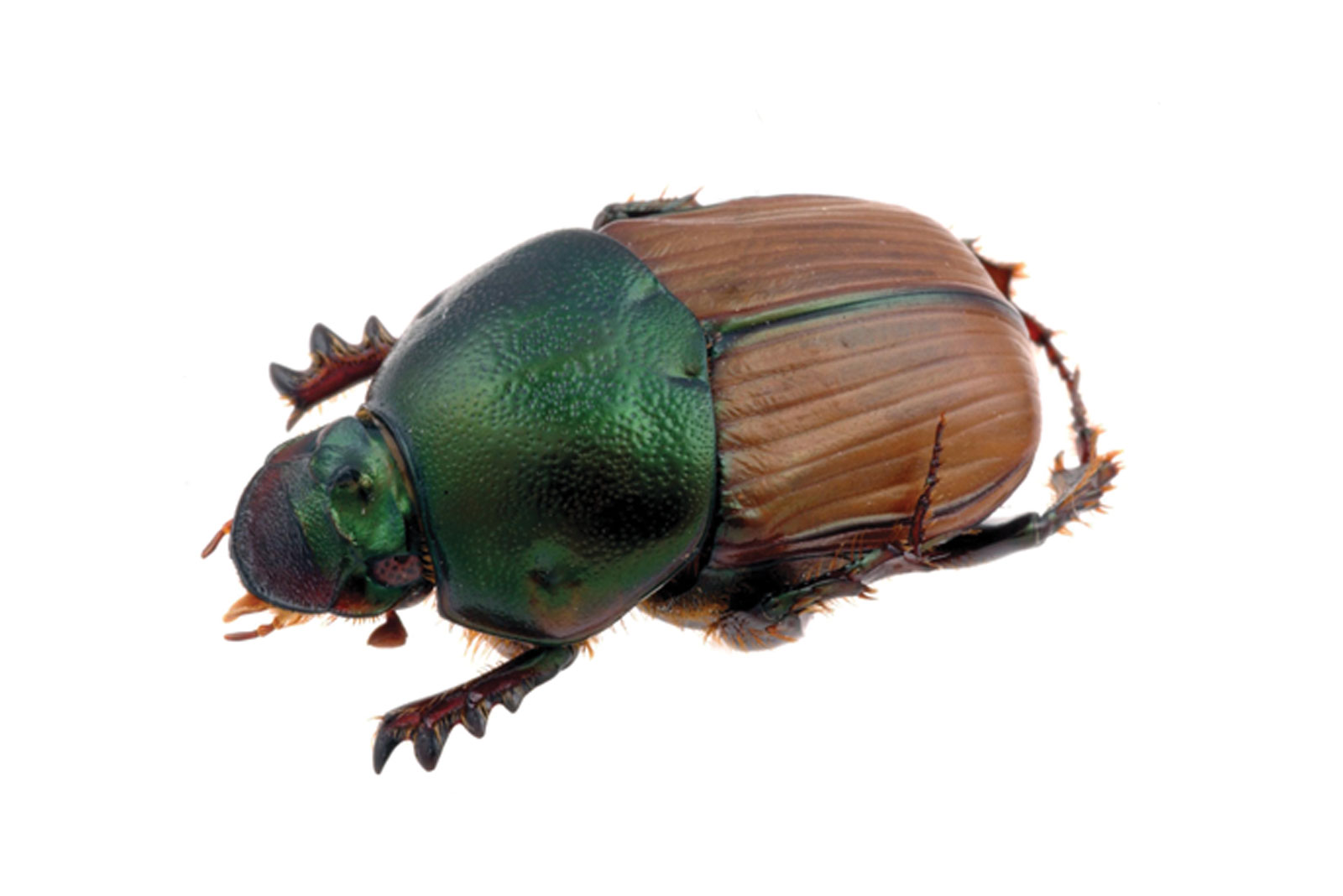As summer draws to a close, dung beetle diversity begins to decline as many of the summer-active beetles finish up their activities for the year. However, several species of dung beetle remain active through autumn, helping to rid pastures of dung and improving soil quality.
The dung beetle community at this time of year in many places is dominated by two medium-to-large species of Onitis (O. alexis and O. aygulus) and the smaller Digitonthophagus gazella. This article will focus on the two Onitis species.
Onitis alexis and O. aygulus are very similar in overall appearance, with light brown elytra (wing covers) and metallic brown pronotum (the region between the head and the wings); often the pronotum has a metallic green tint. In theory, it should be possible to distinguish the two species based on size (O. alexis ranges in length from 13 to 20 mm whereas O. aygulus nominally ranges in length from 20 to 25 mm), but stunted individuals of O. aygulus might fall into the size range of O. alexis. A more definitive way to distinguish the two species is to look at detailed features on the head.
Onitis alexis and O. aygulus have two low ridges on their heads: the frontal ridge and the clypeal ridge. The frontal ridge is located between the eyes in both species. The clypeal ridge is located between the frontal ridge and the front of the head; in O. alexis, the clypeal ridge is roughly halfway between the frontal ridge and the front of the head, whereas in O. aygulus, the clypeal ridge is closer to the front of the head. In male specimens, another distinguishing feature is the presence of a single spur on the hind femur of O. alexis as opposed to an unequal double spur on the hind femur of O. aygulus. In addition, females generally have stouter teeth on the front legs than males.
The biology of O. alexis and O. aygulus is similar; both emerge in late spring and persist through autumn. They sometimes complete two generations per year. Onitis alexis overwinters as adults or larvae, whereas O. aygulus is thought to overwinter only as larvae. Onitis alexis has established in all states but Tasmania, while O. aygulus is present in NSW, SA, WA, ACT and VIC. Reproductive success of these species is thought to be lower in cool damp conditions, which may account for the lack of establishment in Tasmania at this time.
